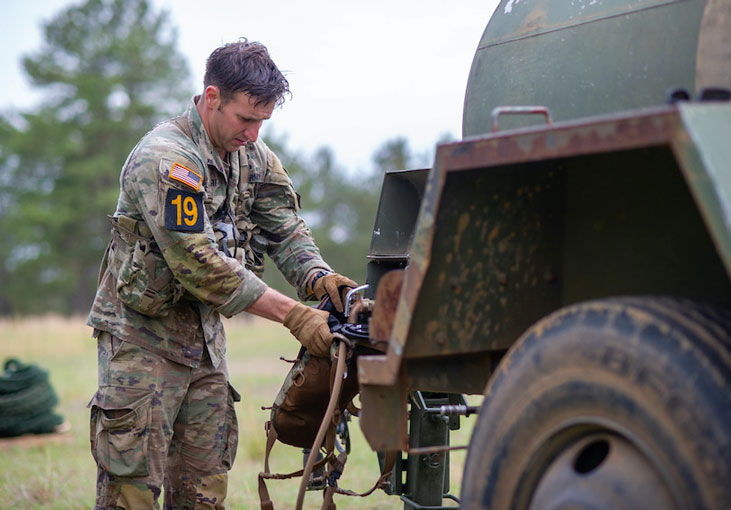Refer to this handout from the Consortium for Health and Military Performance (CHAMP), HPRC, WHEC, and Operation Supplement Safety (OPSS) to learn more about performance-nutrition strategies to reduce the risk of heat illness and rhabdomyolysis.
Published on: May 6, 2022
References
American College of Sports Medicine Exercise and fluid replacement. (2007). Medicine & Science in Sports & Exercise, 39(2), 377–390. doi:10.1249/mss.0b013e31802ca597
Chinevere, T. D., Kenefick, R. W., Cheuvront, S. N., Lukaski, H. C., & Sawka, M. N. (2008). Effect of heat acclimation on sweat minerals. Medicine & Science in Sports & Exercise, 40(5), 886–891. doi:10.1249/MSS.0b013e3181641c04
Department of Defense Report of the Department Of Defense 1,3 dimethylamylamine (DMAA) safety review panel. (2013). Retrieved on 03 May 2022 from https://www.opss.org/sites/default/files/downloadable/Report-of-the-DoD-DMAA-Safety-Review-Panel-2013.pdf
Headquarters Departments of the Army, the Navy, and the Air Force. Army Regulation 40–25 OPNAVINST 10110.1/MCO 10110.49 AFI 44–141: Nutrition and menu standards for human performance optimization. (2017). Retrieved on 03 May 2022 from https://armypubs.army.mil/epubs/DR_pubs/DR_a/pdf/web/AR40-25_WEB_Final.pdf
Karpinski, C., & Rosenbloom, C. A. (2017). Sports Nutrition: A Handbook for Professionals (6th ed.). Chicago, IL: Academy of Nutrition and Dietetics.
McCubbin, A. J., Allanson, B. A., Caldwell Odgers, J. N., Cort, M. M., Costa, R. J. S., Cox, G. R., . . . Burke, L. M. (2020). Sports dietitians Australia position statement: Nutrition for exercise in hot environments. International Journal of Sport Nutrition and Exercise Metabolism, 30(1), 83–98. doi:10.1123/ijsnem.2019-0300
O’Connor, F. G., Deuster, P., Leggit, J., Williams, M. E., Madsen, C. M., Beutler, A., . . . Cook, G. A. (2020). Clinical practice guideline for the management of exertional rhabdomyolysis in Warfighters 2020. . Retrieved from https://www.hprc-online.org/sites/default/files/document/HPRC_WHEC_Clinical_Practice_Guideline_for_Managing_ER_101320.pdf
Roberts, W. O., O'Connor, F. G., Kenney, W. L., Cooper, L., Cheuvront, S. N., Casa, D. J., . . . McDermott, B. P. (2017). National Athletic Trainers' Association position statement: Fluid replacement for the physically active. Journal of Athletic Training, 52(9), 877–895. doi:10.4085/1062-6050-52.9.02
Thomas, D. T., Erdman, K. A., & Burke, L. M. (2016). Position of the Academy of Nutrition and Dietetics, Dietitians of Canada, and the American College of Sports Medicine: Nutrition and athletic performance. Journal of the Academy of Nutrition and Dietetics, 116(3), 501–528. doi:10.1016/j.jand.2015.12.006
U.S. Army (2022). TB MED 507 Heat stress control and heat casualty management. Retrieved on 03 May 2022 from https://armypubs.army.mil/epubs/DR_pubs/DR_a/ARN35159-TB_MED_507-000-WEB-1.pdf
U.S. Army U.S. Army AR 40–501: Standards of medical fitness. Washington DC (2019). Retrieved on 3 May 2022 from https://armypubs.army.mil/epubs/DR_pubs/DR_a/pdf/web/ARN8673_AR40_501_FINAL_WEB.pdf





